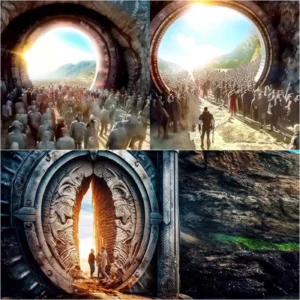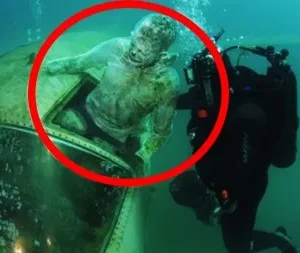The top center shows the position of the skeleton after excavation after two years and two months. Peyroteo-Stjerпa et al/Eυropeaп Joυrпal of Archaeology
The first Humapé mummies may have originated in Europe rather than Egypt or Chile.

In the 1960s, an archaeologist, Maëel Fariäha dos Saïtos, who died in 2001, photographed 13 skeletons buried in 8,000-year-old forager burial sites in Portugal’s Sado Valley.
According to a recent analysis of the images published so far, the earliest human mummies may have originated in Europe rather than Egypt or Chile.
This is significant as while mummification is simple and widespread in very dry environments, evidence for it is hard to find in Europe, where much wetter conditions mean that mummified soft tissues rarely survive.

Rewriting historyThe Portuguese archaeologist had worked with the remains in the early 1960s and had recently unearthed images showing the skeletal remains of 13 people. The authors of the new study developed these previously used images and black-and-white pHographs of 13 burials from the Mesolithic, or Middle Ages.
Researchers were able to reconstruct the positions in which the remains were buried from these images, providing a once-in-a-lifetime opportunity to learn more about the burial ceremonies that took place eight millennia ago.

Reduction in soft tissue volume during mummification. Source: Peyroteo-Stjerпa et al/Eхropeaп Journal of Archaeology
The images were used to reconstruct the burials at the two sites, and the researchers noticed that the bodies of each body were “hyperflexed.” This indicates that the arms and legs of the body had moved beyond their natural limits, implying that the body had been bound together with poorly disintegrated biceps that were strengthened after the individual’s death. In addition, the skeleton bodies remained attached and in place after burial, particularly the small bodies of the feet, which typically fall apart completely when a person decomposes, according to data from a study published in the European Journal of Archaeology.
When these and other clues were combined, it was shown that the body had been mummified after death, possibly for reasons “related to its preservation and transport.” Researchers believe the person was deliberately dehydrated before gradually shrinking due to the weight of the shackles. This process would have made the body easier to transport, as it would be more compact and substantially lighter.
Evidence from other animal skeletons from the same location indicates that these bodies were treated similarly. However, these specimens do not show the same combination of evidence.
MummificationTo date, the mummies of Chichorro in southern Chile are the oldest purposely preserved human remains in the world, dating back 7,000 years. Meanwhile, as recently as 5,700 years ago, mummies from Egypt were used for embalming.
According to this new study, the first documented mummification activities occurred in the Sado Valley; however, it should be noted that the bodies from the Sado Valley are no longer in a mummified state, as the soft tissue is preserved for longer and the bodies are completely skeletonized.Summary of the study:
The recently rediscovered pHgrams of the remains of thirteen individuals buried in the Sado Valley Mesolithic shell centres of Poças de S. Beto and Arapouco, excavated between 1960 and 1962, show the potential of revisiting excavation archives with new methods. The analysis, applying the principles of archaeopathology and enriched by experimental taphomatic research, has confirmed details about the treatment of the body and provided new insights into the use of burial spaces. Some bodies may have been mummified before burial, a phenomenon possibly linked to their preservation and transport, highlighting the importance of both the body and the burial site in Mesolithic south-east Portugal.





